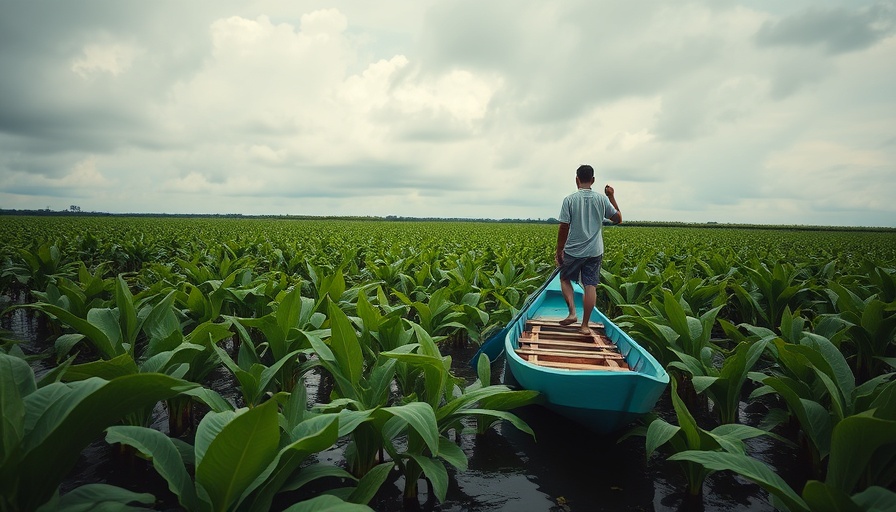
Mining Approvals Raise Eyebrows Amid Conservation Promises
In a surprising development, Cambodian authorities have green-lighted the construction of a new cement factory within the Prey Lang Wildlife Sanctuary, contradicting a recent moratorium on new mining licenses issued in November 2023. This decision has sparked fervent discussions around environmental conservation, governance, and corporate ethics in Cambodia.
The cement factory, positioned less than a kilometer from limestone mining operations, is a significant step back for a region that has faced ongoing concerns about ecological preservation. Despite assurances from government officials, including Minister Keo Rattanak, regarding stricter controls and bans on new mining activities, the cement plant development suggests a puzzling inconsistency in policy enforcement.
Prey Lang Under Pressure: A Wildlife Sanctuary at Risk
The Prey Lang Wildlife Sanctuary is crucial for not only its diverse ecosystems but also for the indigenous communities thriving within its borders. Covering approximately 490,000 hectares, it is one of the largest remaining lowland rainforests in mainland Southeast Asia. Predominantly home to the Kuy ethnic group, the sanctuary also plays a vital role in regulating the hydrology of significant water bodies including the Mekong River and Tonle Sap Lake.
Recent statistics indicate alarming deforestation rates, with illegal logging and industrial-scale mining operations rapidly depleting its resources. Conservationists have long flagged that the sanctuary has turned into a hotspot for illegal timber trading and mining, raising serious questions about governance and enforcement of environmental regulations.
Government Accountability: Striking a Balance Between Industry and Nature
The Cambodian government’s approval of the new cement plant reveals a troubling trend where development interests overshadow environmental protections. Critics argue that this pattern is indicative of a broader issue where politically connected companies prioritize profit over ecological integrity. With resources treated as expendable by industries like KP Cement, the balance of sustainable living is jeopardized.
“The Prey Lang sanctuary is being destroyed. Mining is destroying land and poisoning waterways, while logging strips the last commercially valuable trees,” comments Ida Theilade, a professor from the University of Copenhagen. Such sentiments underscore the urgency for both local and global stakeholders to scrutinize governance practices and advocate for more sustainable economic models.
The Challenges of Upholding Conservation in Cambodia
Despite the clear benefits of preserving Cambodia’s unique biodiversity, the increasing pressures of industrial development make enforcement of conservation laws exceedingly complicated. The interaction between land management policies and economic incentives creates a pivotal challenge for environmental activists.
In terms of sustainable development, one must ask: how can Cambodia attract foreign investment while simultaneously safeguarding critical natural resources? A robust framework that ensures environmentally responsible business practices is essential. Potential models include circular economy principles that emphasize waste reduction and sustainable sourcing.
Future Directions: Community Engagement and Sustainable Governance
Community involvement will be crucial in shaping the future of Prey Lang and similar ecosystems. Indigenous communities have historically been the stewards of these resources, and their engagement in sustainable practices can be pivotal in enforcing regulations against illegal exploitation. Empowering these groups with the tools to advocate for their land rights and ecological stewardship can pave the way for a more sustainable future.
Organizational support for community-led initiatives could bring forth innovative solutions for environmental management. Examples could be the promotion of organic products, responsible consumption, or sustainable tourism, creating job opportunities without compromising the ecological landscape.
Take Action for a Sustainable Future
For eco-conscious readers, the time to engage in local and global initiatives for sustainable living is now essential. Whether it is advocating for better environmental policies or supporting ethical consumerism, every small step collectively builds towards a more sustainable future. Explore ways to support fair trade products, reduce plastic pollution, or consider renewable energy options—every action counts.
 Add Row
Add Row  Add
Add 



Write A Comment